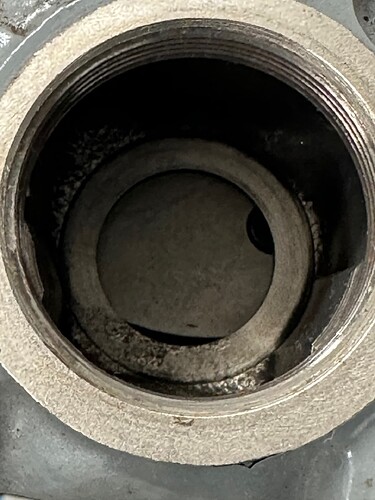Who’s has a corken t91 and production running nbutane and how fast does it recovery per minute and what type of heater are you running.
We use Huber CC-315 heaters. We recover roughly 1 lb of solvent / 2 minutes. Do you still use the T91? We are having some difficulties with mine and am looking for help troubleshooting.
What is going on with your T91?
Use a Corken T91 with my ETS MEP70.
Every day I will remove the braided solvent line form my back condensing coil and blow it out with N2 to get any moister out of the lines to avoid ice blocks. Then I reconnect the line and repressurize this “back end” of the system from the discharge of the Corken to the main 100# tank we use for solvent storage. This always stays pressurized, while not changing the pressure in the suction/inlet side.
We change the oil every 1.5 months as directed by the manual and wave a magnet over it to ensure we don’t see metal shavings.
This has been working well for 6+ months. On our routine maintenance, we found some “guck” on our inlet valve assembly. We took it apart and cleaned it and set it back together. After we set it back together and tried to repressurize the system pressure was going past the valves and flowing freely through the corken without the corken being on.
I thought that meant the valves were broken, so I ordered a new valve set, replaced them and im still having this same issue.
I check the piston rings and the cleaned the piston head off and it seems well and good.
Anyone have suggestions on where to go next? Or maybe who might have good advice?
Hey @ChiefK19
I have experienced this exact same issue with more than one corken at this point. Whenever i talk to either ETS or Corken, they tell me that the bleed back you are experiencing is normal because the seals that those check valves sit on are metal on metal contacts. Im guessing that the small amount of “Guck” you pulled out of it was actually helping you create a seal.
One thing to make sure of is that when you’re replacing those check valves you need to crank them back onto the Corken pretty damn hard to try and pinch that metal washer as much as possible.
Also, after blowing out your back line, applying vac to the front side of the system up until the inlet check valve should “Prime” that check valve according to ETS and Corken.
Ah that’s very interesting, I haven’t heard that before.
I know that the larger Corken models have a rubber/viton valve gasket instead of metal.
If you take a look at both of these you will notice a small amount of pitting around the discharge seat. This is where your metal washer sits, and the force you apply to screwing the check valve in, will compress that washer into these metal seats.
Unfortunately, no rubber seals in here like Tech1145 mentioned.
I would take your corken apart again and inspect these on your system. Hopefully yours is just a little dirty and not pitted like mine was!
We did relook at this and don’t see any pitting so that is a relief. We are using new gaskets and we see markings on them from when we tightened the collar down (which tells me we had to have them tight enough).
I appreciate the input and will update if/when I figure more out!

